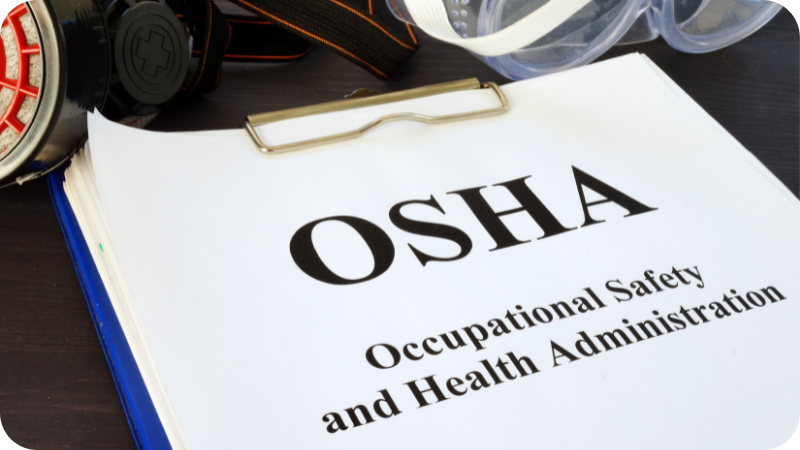- Products
- Use Cases
- Process contractors and validate credentials
- Improve facility compliance to industry standards
- Improve speed of visitor check-in process
- Screen visitors or restrict access to my facility
- Automate my reception experience
- Improve and automate my facility evacuation process
- Manage facility security across multiple locations
- Industries
- Pricing
- Resources
- Company
Effective Emergency Planning: A Five-Step Guide to Ensuring Safety & Compliance
by Andrew Quinn
October 23, 2023
Emergency planning is a critical aspect of any organization's operations. It not only ensures the safety of employees and stakeholders but also guarantees compliance with industry standards and regulations. This blog post will guide you through the essential steps of effective emergency planning, offering practical applications to help you optimize your facility's emergency readiness.
Take control of your facility's safety with @GoiLobby’s latest blog post. Learn how a comprehensive risk assessment, effective communication, and constant updates can put you ahead. Read more:Step 1: Conduct a Thorough Risk Assessment
When it comes to emergency planning, conducting a thorough risk assessment is more than just the first step; it's the bedrock upon which all other measures are built. This process involves a three-pronged approach: identifying potential hazards, evaluating their potential impact, and implementing measures to mitigate these risks.
A well-executed risk assessment provides a clear understanding of vulnerabilities in your system, equipping you with the knowledge needed to anticipate and prepare for potential emergencies. However, the importance of a risk assessment extends beyond just preparation. By shedding light on the weaknesses within your facility, a risk assessment allows you to secure your assets, protect your staff, and ensure business continuity — all key elements of a robust emergency plan.
Identifying Potential Hazards
The first stage of a risk assessment involves identifying potential hazards within your facility. These could range from physical threats, such as fire or chemical spills, to digital threats, like cybersecurity breaches. According to FacilitiesNet, increasing cybersecurity threats are a significant challenge in facility management, highlighting the need for comprehensive risk identification.
Evaluating Potential Impact
Once potential hazards have been identified, the next step is to evaluate their possible impact. This includes considering both the immediate consequences of an emergency and the longer-term effects on business operations. For example, a fire could cause immediate harm to staff and damage to equipment while also leading to production downtime that affects business continuity.
Implementing Mitigation Measures
The final step of a risk assessment involves implementing measures to mitigate the identified risks. This could include installing fire suppression systems, strengthening cybersecurity defenses, or developing evacuation procedures.
Step 2: Develop a Communication Strategy
During an emergency, the importance of effective communication cannot be overstated. According to the International Organization for Standardization (ISO), a well-formulated communication strategy is a crucial element in managing emergencies. This strategy should ensure that vital information is swiftly disseminated to all relevant parties - employees, emergency services, and other stakeholders.
Channels of Communication
Deciding on the channels of communication to be used in case of an emergency is a crucial part of your strategy. These could range from traditional methods like PA systems and phone trees to modern solutions such as digital signage, mobile apps, and social media platforms.
Your communication strategy should outline the channels of communication to be used, the information to be relayed, and the individuals responsible for communication. Remember, in an emergency, a well-informed team is a safe team.
A robust communication strategy not only ensures the swift dissemination of vital information but also contributes to the overall safety and security of your facility. As the adage goes, "Knowledge is power," and in the context of emergency management, this knowledge can make all the difference.
Ensure compliance and protect your team with @GoiLobby’s Five-Step Guide to Effective Emergency Planning. Dive into the importance of regular checks, embracing change, staying compliant, and leveraging technology:
Step 3: Design a Detailed Evacuation Procedure
In emergency planning, a detailed evacuation procedure is more than just a component—it's a cornerstone. This procedure serves as a roadmap, guiding staff members to safety when an emergency strikes. However, creating an effective evacuation procedure involves more than simply drawing up a plan; it requires careful consideration of escape routes, assembly points, and roles and responsibilities during the evacuation.
Escape Routes
The first element of an effective evacuation procedure is the identification and clear marking of escape routes. These routes should be easily accessible and free from any potential hazards. Additionally, alternative routes should be planned in case the primary escape route becomes inaccessible during an emergency.
Mustering Points
Designating safe mustering points is another crucial part of an evacuation procedure. These points should be located at a safe distance from the facility and have enough space to accommodate all staff members. Clear signage should be used to indicate these assembly points.
Roles and Responsibilities
Assigning roles and responsibilities during an evacuation is key to ensuring a smooth and efficient evacuation process. These roles could include fire wardens, who are responsible for checking areas to ensure everyone has evacuated, and designated first aiders, who can provide immediate care if needed.
The Role of Technology in Evacuation Procedures
In today's digital age, technology plays a significant role in enhancing the efficiency and effectiveness of evacuation procedures. iLobby's EmergencyOS emergency management solution is a prime example of this. By digitizing emergency alerts, evacuations, and reporting, this solution helps to improve the speed and efficiency of evacuations. iLobby's EmergencyOS is instrumental in reducing risk, minimizing downtime, and avoiding costly penalties.
Remember, the goal of an evacuation procedure is not merely to respond to an emergency but to do so in a way that ensures everyone knows exactly what to do and where to go. A well-designed evacuation management system can make all the difference when it comes to safeguarding your staff and your facility.
Step 4: Train and Educate Staff
Successful emergency planning isn't solely about developing comprehensive strategies—it's about ensuring that every staff member understands and can effectively implement these strategies. Training and education play a pivotal role in this context, serving as the bridge between theoretical planning and practical application.
The Role of Education in Emergency Planning
Education is the first step in preparing staff for emergencies. Staff members should be educated on the emergency plan, including the risks identified, the communication strategy, and the evacuation procedure. This understanding forms the foundation upon which effective emergency responses are built.
Regular Training Sessions
Regular training sessions are crucial for reinforcing this knowledge and helping staff understand their roles during an emergency. These sessions can include drills, simulations, and workshops that mimic potential emergency scenarios, providing staff with hands-on experience in executing emergency plans.
Enhancing Safety and Boosting Confidence
Effective training does more than just prepare staff for emergencies—it enhances overall safety and boosts staff confidence. According to the Occupational Safety and Health Administration (OSHA), well-trained employees are less likely to commit errors that could lead to workplace accidents. Moreover, when staff are confident in their ability to handle emergencies, they're more likely to respond quickly and effectively, further enhancing safety.

Step 5: Nurture Your Evolving Emergency Plan
Just as your organization grows and adapts to changing circumstances, so too should your emergency plan. Far from being static, these critical documents must pulse with the rhythm of your business, reflecting your facility's current state. Regular reviews and updates are essential, ensuring that your plan is relevant, comprehensive, practical, and in line with industry standards.
The Power of Regular Check-Ins
Think of regular reviews as a health check for your emergency plan. This process presents an invaluable opportunity to assess the plan's effectiveness and pinpoint areas for enhancement. It's about thoroughly examining every facet—from risk assessments and communication strategies to evacuation procedures and staff training programs—ensuring your strategy is robust and resilient.
Embrace Change, Enhance Preparedness
Facility changes such as new equipment, altered layouts, or increased staff numbers can profoundly impact your emergency plan's efficacy. Staff changes, including new hires or shifts in roles and responsibilities, also warrant plan updates. Regular reviews ensure your emergency plan mirrors your facility's current state, guaranteeing optimal preparedness.
Stay Ahead with Regulatory Compliance
With industry regulations and standards in a constant state of flux, your emergency plan needs to keep pace. Regular reviews ensure your plan aligns with the latest industry regulations, helping you sidestep potential penalties and bolstering your facility's safety and security.
Harness Technology for Streamlined Reviews
In our digital era, technology is a powerful ally in conducting efficient and effective reviews. Cutting-edge solutions like iLobby's EmergencyOS offer invaluable insights and analytics, empowering you to evaluate your emergency plan's effectiveness and identify improvement opportunities.
Emergency planning is a vital aspect of facility optimization, compliance, and security. By following these five steps - conducting a thorough risk assessment, developing a communication strategy, designing a detailed evacuation procedure, training and educating staff, and regularly reviewing and updating the plan, you can help to ensure your organization is prepared in the event of an emergency.
Remember, a robust emergency plan doesn't just tick boxes for regulatory compliance - it protects your staff, your assets, and your business.
Transform your emergency management with iLobby’s EmergencyOS - a solution designed to digitize and streamline every stage of your evacuation process. From real-time updates and direct communication to detailed metrics and compliance reporting, EmergencyOS offers a centralized dashboard that enhances safety and efficiency. Schedule a demo today.
Andrew Quinn
Andrew is a dedicated Sales Executive at iLobby, actively contributing to the growth and adoption of our Facility and Visitor Management solutions. Outside the office, Andrew enjoys golfing, hiking, traveling, and experimenting with new recipes in the kitchen.
Related Posts
View All Posts
Emergency Management
4 min read
The Four Phases of Emergency Management
Continue Reading
Emergency Management
5 min read
How to Communicate Emergency Protocols to Visitors and Contractors
Continue Reading
Emergency Management
5 min read
